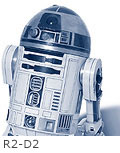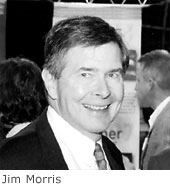
Robots of Fact and Fiction Enshrined in Carnegie Mellon’s Robot Hall of Fame
R2-D2 is enshrined here. So is the villainous Hal the Computer. And Unimate, the giant robot arm that helped rebuild Detroit. And the grandfather of Mars rovers, Sojourner. They’re the first wave of great robots from fiction and fact inducted into their own Hall of Fame.

“This is where the Robot Hall of Fame belongs,” said Carnegie Mellon President Jared L. Cohon at November’s induction ceremony. “This international first is an historic day for Pittsburgh and Carnegie Mellon, the world center for robotics research and education. This is a natural next step. We hope the Hall of Fame will become an international tourist attraction in Pittsburgh.”
Jim Morris, who recently stepped down as dean of the School of Computer Science, conceived the idea to honor noteworthy robots and their creators as a way to recognize the benefits of robots on society.

“Science fiction is the first draft of science and technology,” Morris said in explaining the choice of Hal, from 2001: A Space Odyssey, and the tiny droid from Star Wars. “Jules Verne took us to the moon before NASA did.”
Unimate is the 9,000-pound robotic arm first installed in a General Motors assembly plant in 1961, launching a manufacturing revolution. Sojourner, officially the Mars Pathfinder Microrover Flight Experiment, surpassed all expectations by traveling 800 feet across the Mars surface in 1997. Hal 9000 is the infamous renegade computer created by science fiction novelist Arthur C. Clarke, and featured in the film adaptation of 2001: A Space Odyssey. The droid R2-D2, perhaps the ultimate robot icon, is still starring in the "Star Wars" series created by George Lucas.
The robots’ creators or their associates accepted certificates in their honor. Jacob R. Matijevic of NASA's Jet Propulsion Laboratory accepted for the Sojourner rover. Matijevic was responsible for the implementation, integration, delivery and eventual operation of Sojourner.
Unimate’s creator Joseph F. Engelberger, known as "the father of robotics," accepted for Unimate, the first "blue collar robot" that paved the way for the use of robotic technologies in industrial and manufacturing plants. Engleberger, who appeared with Unimate on The Tonight Show with Johnny Carson in the 1960s, called Carnegie Mellon the “world’s top research operation in robotics, and praised the university for creating the hall.

Kathleen Holliday, director of special programs at Lucasfilms, accepted for R2-D2 on behalf of George Lucas, writer and director of "Star Wars." Also representing Lucas and R2-D2 were actor Kenny Baker, who played R2-D2 in the first Star Wars episode, and actor David Prowse, who played Darth Vader in the film.
"On behalf of George Lucas, R2-D2 and Lucasfilms, I thank you . . . and may the force be with you," Holliday said.
Morris put together a panel of 13 experts from around the world to select the first four inductees. Another hall of fame class will be enshrined in October of this year, during the Robotics Institute’s 25th anniversary celebration. Since 1979, Carnegie Mellon’s Robotics Institute has been conducting research in many areas of robotics, helping to focus attention on a field that has great potential to help people.
Scientific robots must have served an actual or potentially useful function and demonstrated real skills in accomplishing the purpose for which they were created. Robots created to entertain must be functioning autonomous devices and have achieved a significant audience. Fictional robots must have achieved worldwide fame as fictional characters and helped to form our opinions about the function and value of all robots.
For more information and to submit a robot for consideration during the 2004 selection process, visit the Robot Hall of Fame Web site at www.robothalloffame.org.
For more on Carnegie Mellon’s world-leading Robotics Institute, visit www.ri.cmu.edu.



